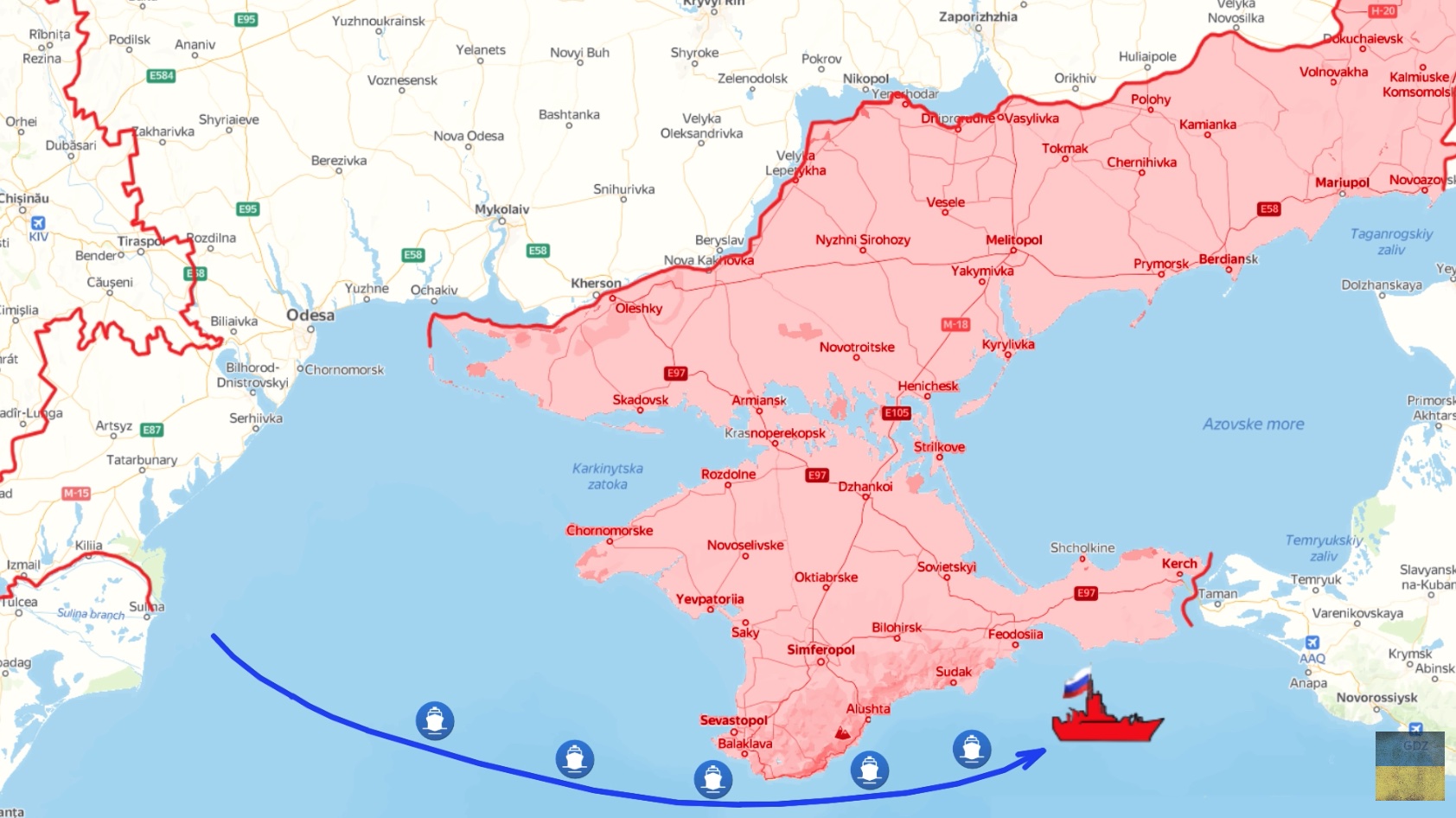Today, there are a lot of interesting updates from Crimea. Here, on 6 March, Ukrainian forces conducted a comprehensive multi-stage operation, which resulted in the destruction of a large Russian patrol ship of the Black Sea Fleet – Sergei Kotov.
It is important to note that these operations take weeks, if not months, to conduct, and most sources miss the scale and complexity of these operations by reporting on just the last thing that happens.
Ukrainian forces do not have a fleet, and Russian warships are careful enough not to get in the range of Ukrainian anti-ship systems as well as sea mines, so as you can imagine, it is extraordinarily difficult for Ukrainians to destroy the Russian fleet.

Right now, Ukrainians have only two means to destroy Russian warships: with Storm Shadow missiles and with marine drones.
When it comes to Storm Shadow missile strikes, they have become increasingly difficult because Russian forces made a series of adjustments, such as relocating their fleet to ports outside of the missile range and being constantly on the move within the missile range.

When it comes to marine drone strikes, they are difficult to conduct because most Russian ships are not only on the move but also have radar, machine guns, and aviation support at their disposal to detect and destroy the approaching drones.

So, catching the Russian ships involves a lot of planning.
The first stage of the operation started on 1 March. Russian sources claimed that Ukrainian forces conducted a series of strikes against Russian targets near Sevastopol, Yevpatoria, Saky, and Simferopol. According to Russian military analysts, the Ukrainian Armed Forces once targeted Russian Aerospace Forces airfields.
In order to complicate the interception of the missiles and confuse the Russian air defense operators as to which missiles to prioritize, Ukrainians made sure to launch decoy missiles. The Russian Ministry of Defense stated that all missiles were intercepted, and the airfields remained intact. And judging by the lack of geolocated footage, it seems like this is true.

This is not surprising, as in a previous strike, Ukrainians managed to hit Russian airfields, so it was expected that Russian forces would adjust. However, given the scarcity of air defense systems, Ukrainians understood that by improving air defense in one region, Russian forces necessarily created a hole in another region.
That is why, two days later, Ukrainians launched a completely different strike in a completely different region. The second stage of the operation involved a massive drone attack in the central part of Crimea. Russian sources reported that Ukrainians launched thirty-eight drones of various types.

What is interesting is that all drones were targeting the same area – Feodosia. Now, as you might still remember, Russian forces have relocated a substantial portion of their Black Sea Fleet from Sevastopol to Feodosia to increase the distance and complicate Ukrainian strikes.
However, the town is still within the range of S-200 missiles, and given that Ukrainians launched so many drones in this direction, Russian forces understood that Ukrainians were purposefully unloading and overloading the Russian air defense to open the sky for the missiles.
In anticipation of the missile strike, Russian forces started moving their ships as it is the easiest precautionary measure against missile strikes. However, by avoiding keeping ships in the bay, Russian forces necessarily exposed their ships to marine drone strikes, which is exactly what was the next Ukrainian move.

On 6 March, Ukrainian forces conducted a marine drone strike on a large Russian patrol ship near Feodosia. Ukraine’s Main Military Intelligence Directorate reported that they successfully attacked the warship using Magura V-five naval drones, inflicting severe damage on the port and starboard sides of the ship, killing seven sailors, and wounding six. Moreover, Ukrainian sources noted that the warship had either a Ka-29 or Ka-27 helicopter on board, which Ukrainian forces destroyed along with the ship.
A Russian insider source claimed that after the initial naval drone strike, Russian forces tried to tow the ship back to port but that the damage was so severe that the ship sank five kilometers off the coast. The Ukrainian Armed Forces Center for Strategic Communications reported that Ukrainian forces had disabled about thirty-three percent of the Black Sea Fleet’s warships, including twenty-four ships and one submarine.
The marine drones are improving day by day, and the success rate of these strikes has significantly increased over the last year. Ukrainian forces have discovered a major weakness in certain types of Russian warships – more precisely, most of them are inadequately equipped to defend themselves against such attacks. By improving the speed and stealth of the drones, Ukrainians are delaying the detection and leaving Russians much less time to engage the drones from machine guns or request support from aviation.
The destruction of the ships is important not only for achieving the long-term objective of liberating Crimea but also for the medium-term objective of forcing Russians to split their military budget and spend money and resources on fixing or building ships instead of other military equipment that would be more useful on the front.
So, in the medium term, the destruction of Russian warships reduces the pressure on the front lines because Russians are allocating resources to ships instead of the front.
In our daily frontline report, we pair up with the military blogger Reporting from Ukraine to keep you informed about what is happening on the battlefield in the Russo-Ukrainian war.
Related:
- Military Intelligence: 27 Russian crew members injured in attack on Sergey Kotov’s ship
- Ukraine intel destroys another Russian navy ship “Sergei Kotov” (updated)
- What Russian Black Sea Fleet ships were destroyed by Ukraine
- Ukraine unveils Sea Baby Avdiivka naval drone




